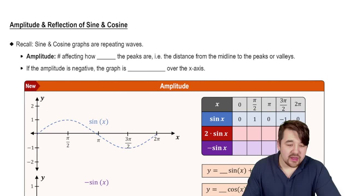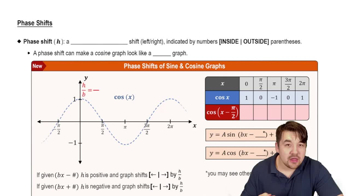Here are the essential concepts you must grasp in order to answer the question correctly.
Amplitude
Amplitude refers to the maximum height of a wave from its central axis. In the function y = 3 sin(πx + 2), the amplitude is represented by the coefficient of the sine function, which is 3. This means the graph will oscillate between 3 and -3, indicating how far the wave reaches above and below its midline.
Recommended video:
Amplitude and Reflection of Sine and Cosine
Period
The period of a trigonometric function is the distance along the x-axis for one complete cycle of the wave. For the function y = 3 sin(πx + 2), the period can be calculated using the formula 2π divided by the coefficient of x inside the sine function. Here, the period is 2, meaning the function will complete one full cycle over an interval of 2 units along the x-axis.
Recommended video:
Period of Sine and Cosine Functions
Phase Shift
Phase shift refers to the horizontal shift of the graph of a trigonometric function. In the function y = 3 sin(πx + 2), the phase shift can be determined by setting the inside of the sine function equal to zero. Solving πx + 2 = 0 gives a phase shift of -2/π, indicating that the graph is shifted to the left by this amount.
Recommended video:
 Verified step by step guidance
Verified step by step guidance Verified Solution
Verified Solution

